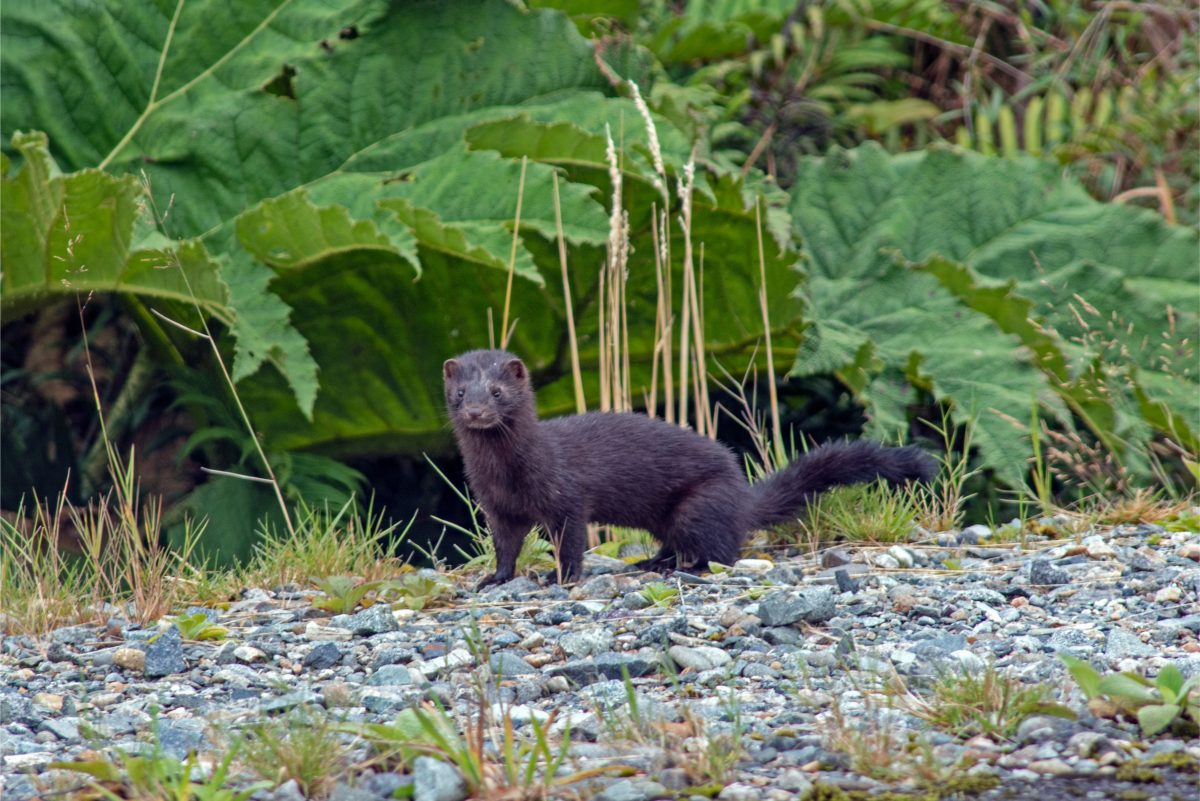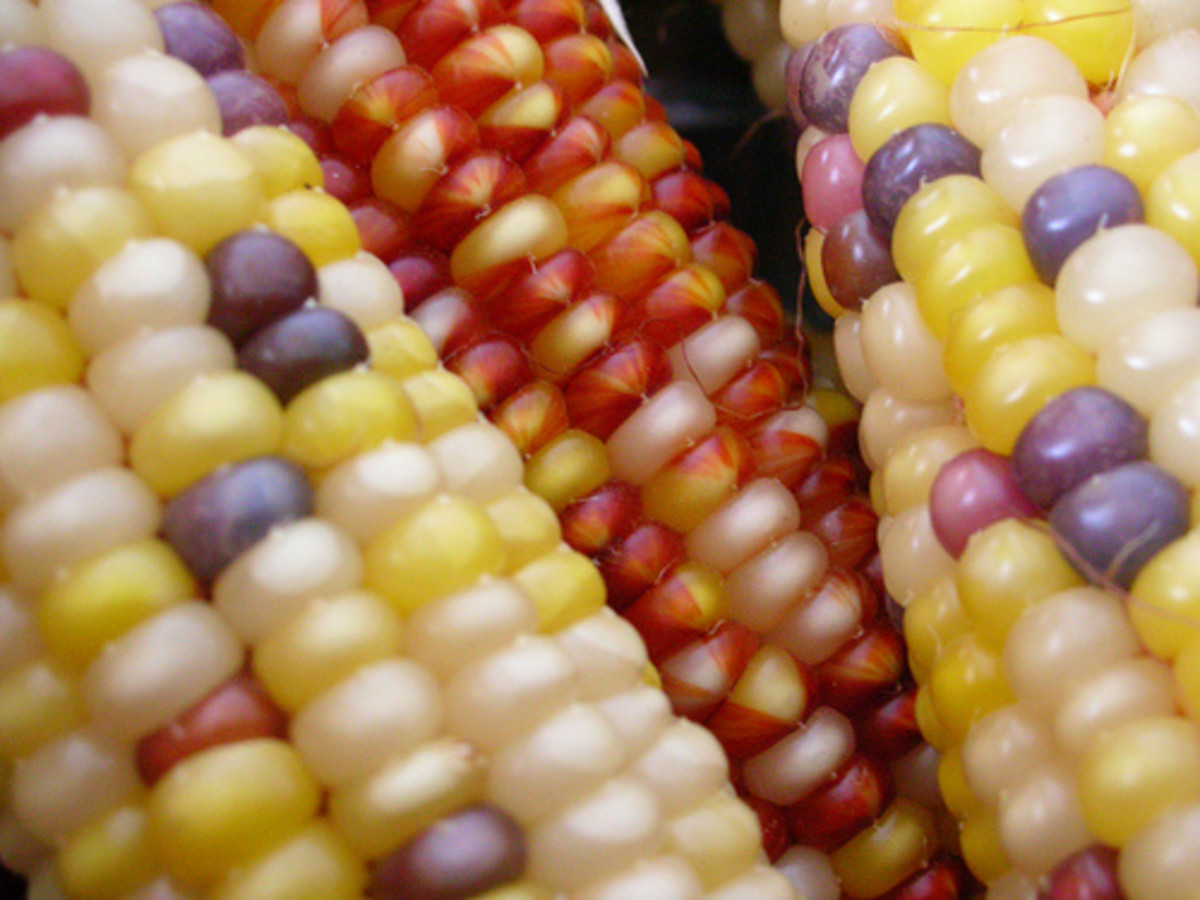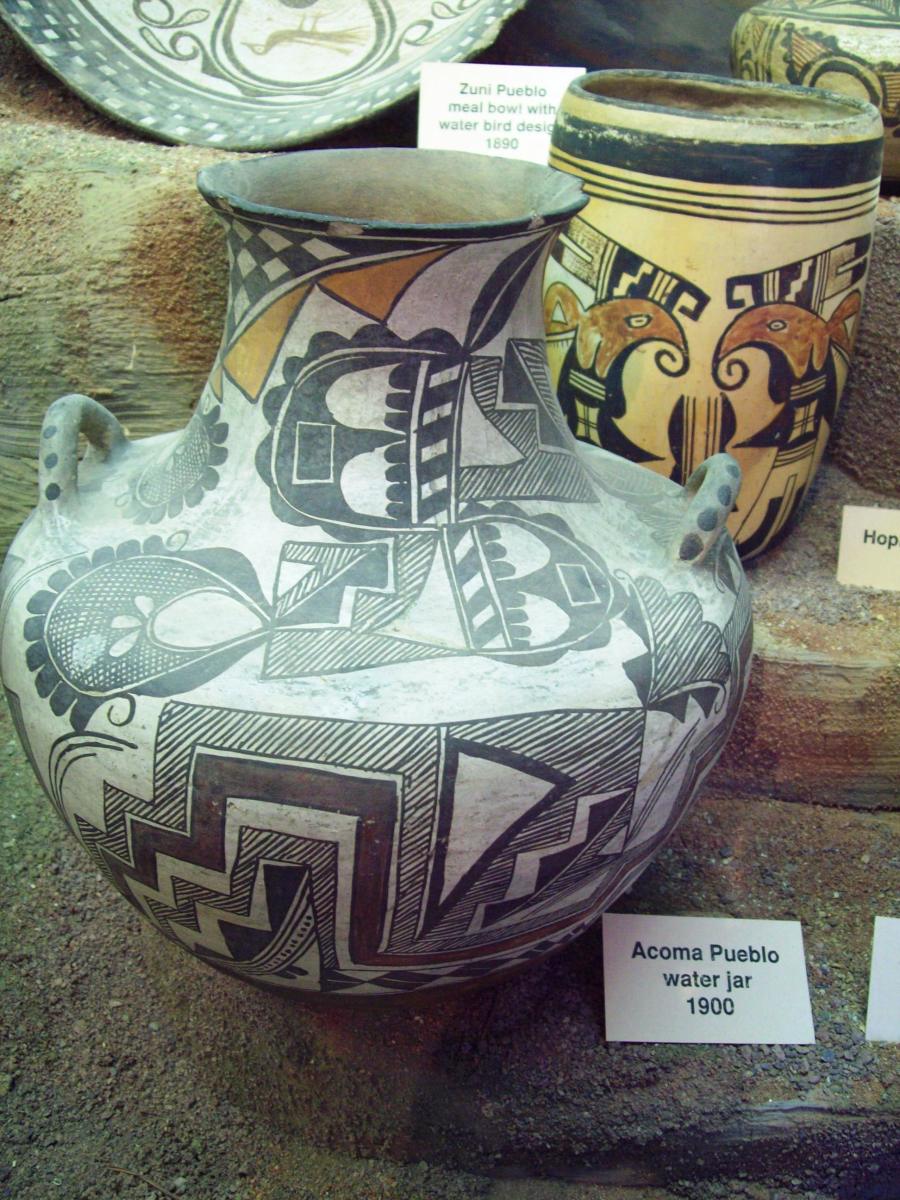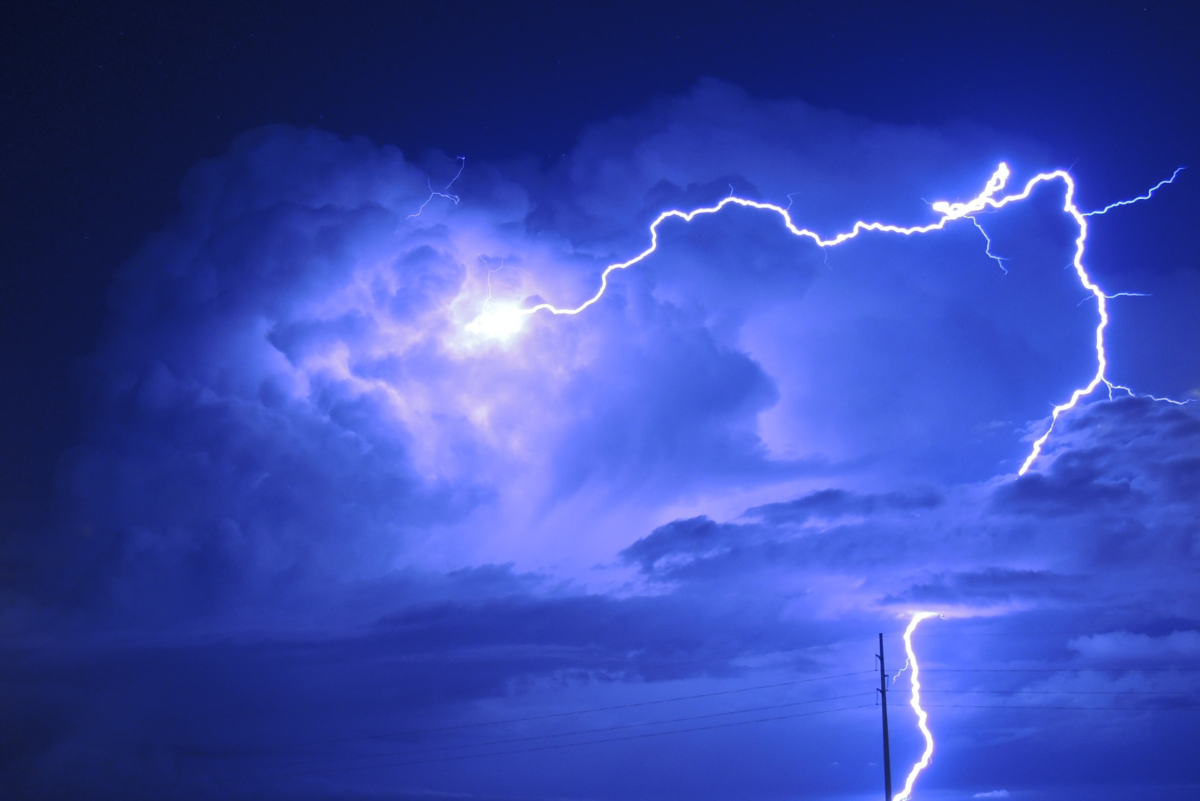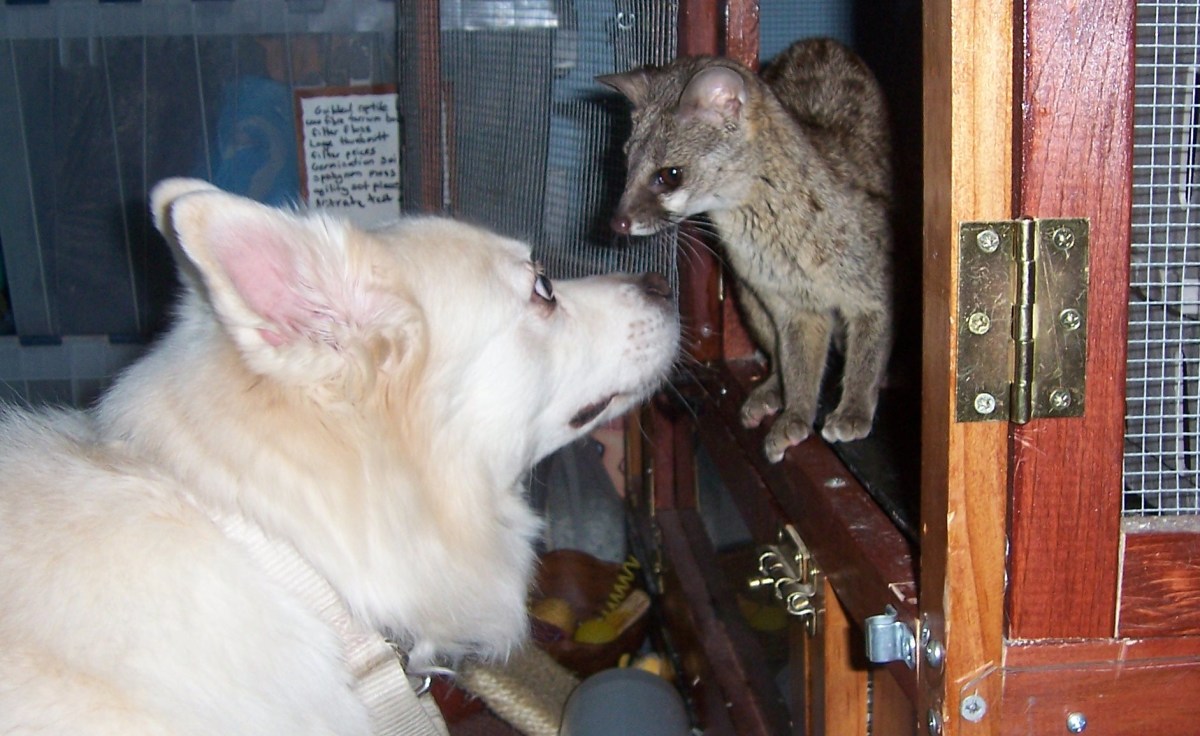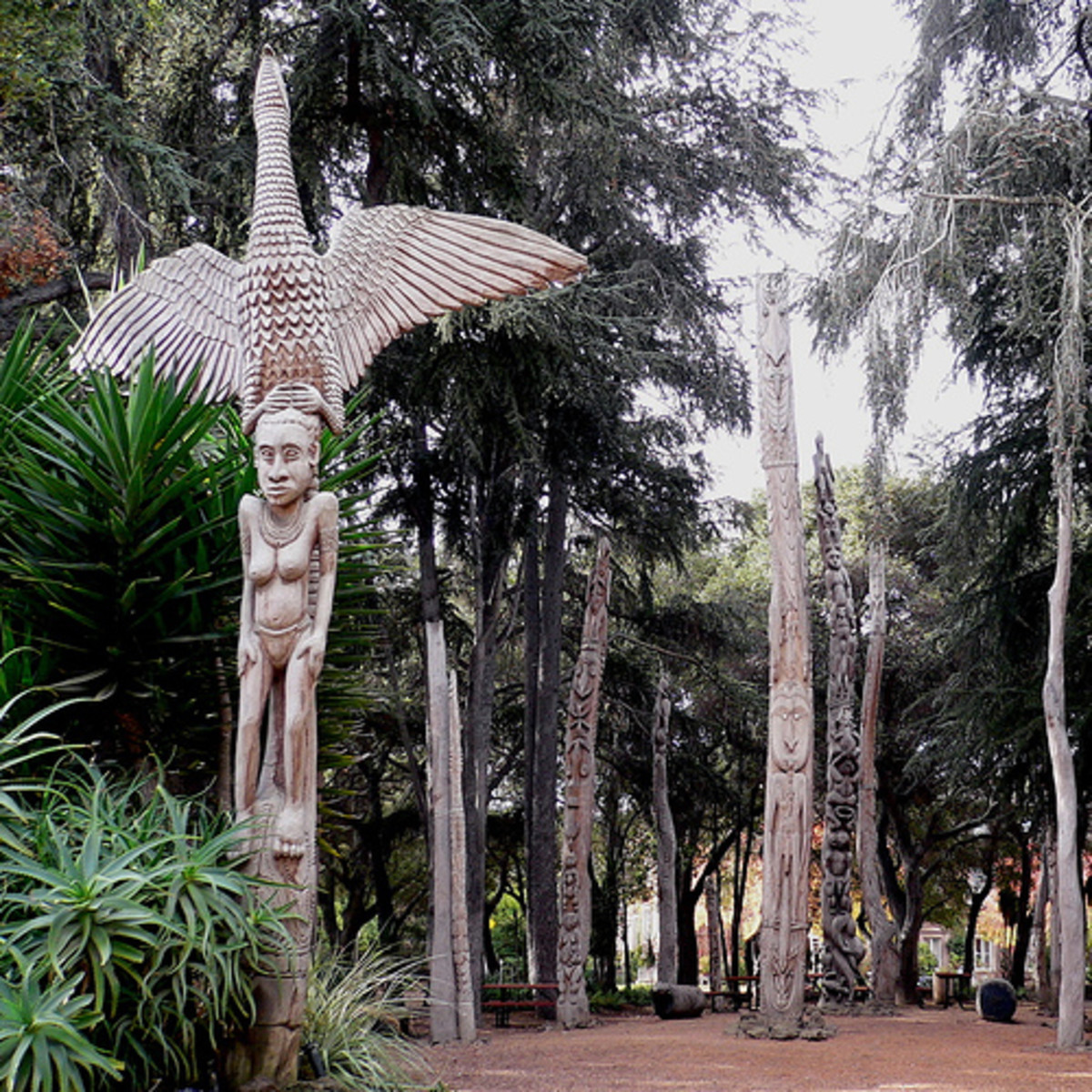- HubPages»
- Education and Science»
- History & Archaeology»
- History of the Americas
Corn Domestication and Importance
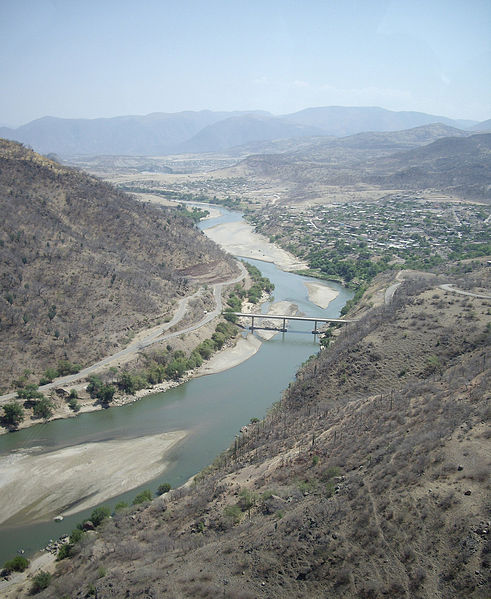
Every civilization goes through changes. Leaders rise and fall. The way everyday life is managed differently from generation-to-generation. Sometimes, it doesn’t even take that long. Regardless, civilizations evolve just like living organisms. Ancient Mesoamerican societies were no different. Domesticated plants changed their lives forever. How did these genetically engineered plants come about? What changes took place? This hub will look at the history and importance of maize (corn) domestication and how it is still an important crop in modern societies.
Mexican States Where Earliest Maize Has Been Found
History of Corn Domestication
The earliest maize can be found in and around the southern Mexican states of Oaxaca and Guerrero. The wild form of corn (teosinte) is a native plant to the highland area of the Central Balsas River Valley, Guerrero, Mexico.
Early inhabitants of Mesoamerica were foragers. They roamed the land in search of food and spent little to no time in a single place. There were no established territories and they lived off of what the land gave them. Over time, these bands of people began to form camps for dry and wet seasons. They established these camps based on where the land was most productive during the respective seasons. Ancient societies began to become more complex in nature. Eventually, around 2600-2300 B.C. (at the earliest), societies became even more complex and domesticated plants made up roughly 35 percent of their diet in the Tehuacàn Valley (Evans 2008). By 1600 B.C., inhabitants of this valley were full-time agriculturalists (Evans 2008) and grew plants such as beans, gourds, avocados, and, of course, maize. Villages started to grow in numbers and relied on a consistent and massive source of subsistence. These domesticated plants, particularly maize, were of great importance to most of the Mesoamerican societies and still are to this day.
(The video below was uploaded to Youtube by DNAlearningcenter.)
Explosive Origins of Corn
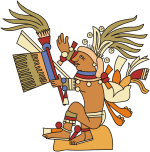
Importance of Domestication in Mesoamerica
Corn was important because of its diversity. It was used as a form of taxation, it can be found in many of the recipes of the region, and it even had its own deities. Maize proved to be a reliable crop in all types of weather. The climactic changes taking place through the region did not affect the production of maize. People were able to grow different types of maize in different types of weather. In order to reduce the risk of crop failure, farmers would plant maize that grew in various types of weather (wet, dry, cold, etc.) in one or multiple fields. This made it so that no harvesting season would be a complete failure.
Native Americans could turn the maize into a multitude of things such as beer. This made the crop not only reliable, but versatile. It also served as a valuable resource for the people under the social elite. Rulers of territories used maize as a form of taxation. People under the rulers had to pay taxes through maize for protection and to participate in marketplace activities. Maize even had its own deities. People valued maize so much there were two (male and female) deities devoted to the domesticated plant.
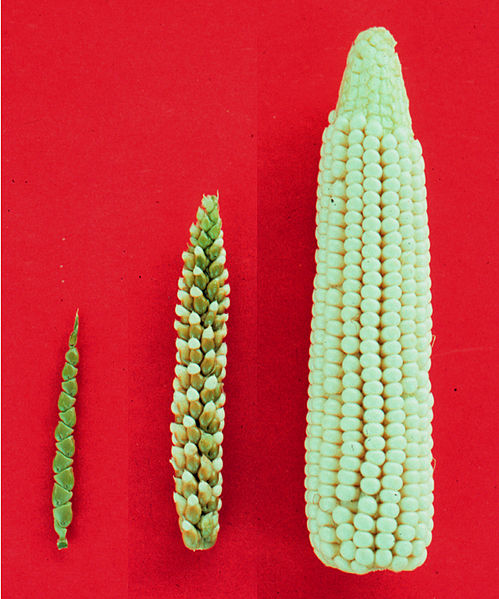
Maize vs Teosinte
When comparing teosinte and maize, aesthetically, one cannot help but notice the stark contrasts between the two plants. Maize is thick with kernels wrapped around a three dimensional core. The ear is long and produces many kernels for human consumption. Many scientists studying maize did not believe it possible for it to have come from teosinte.
Many of the differences between the two plants revolve solely around the kernels themselves. For example, the teosinte ear has 5 to 12 kernels sealed tightly in a stony casing. The stony casing holding the kernel has collectively become known as the cupulate fruitcase which allows the seed to pass through the digestive tracks of predators to ensure the kernels survival and chance for new life (Doebley 2004). Maize can have 500 or more kernels (Doebley 2004) and have no protection from animal or human consumption. They are attached to the plant by the ear.
The cupulate fruitcase of teosinte, in essence, unfold and form the central axis of maize that we now know today. The kernels of maize are firmly attached to the ear and are unable to be blown off by wind. This means that when the ear of corn dies and falls to the ground the kernels or seeds are congregated in a small space. The seeds are unable to germinate the following season, as adequate light and soil are not present for proper growth and reproduction (Doebley 2004). Teosinte, on the other had, is loosely attached to the ear of the plant and is easily blown off by the wind.
Teosinte is the common name for a group of four annual and perennial species of the genus Zea (Doebley 2004). Their growth form is similar to maize, but with longer lateral branches, and some species are distinct from maize, genetically and taxonomically (Doebley 2004). These types appear not to play a role in the origins of maize. However, Z. mays ssp. Parviglumis (Balsas teosinte) shows a close relationship with maize, genetically, and evidence would indicate that it is the direct ancestor of maize (Doebley 2004).
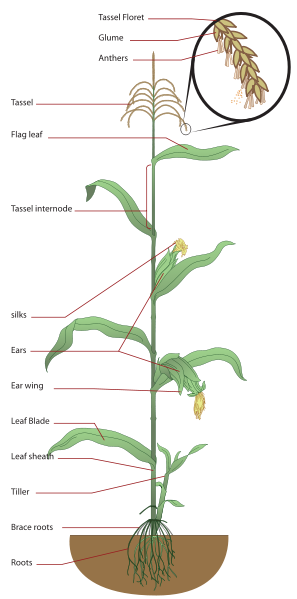
Table 1: Top Agricultural Products, By Individual Crops (2004)
Crop
| Million Metric Tons
|
|---|---|
Sugar Cane
| 1,324
|
Maize
| 721
|
Wheat
| 627
|
Rice
| 605
|
Potatoes
| 328
|
Sugar Beet
| 249
|
Soybean
| 204
|
Oil Palm Fruit
| 162
|
Barley
| 154
|
Tomato
| 120
|
Data provided by UN Food & Agriculture Organization (FAO).
Table 2: Top 10 Corn Producers (2009)
Country
| Million Tons
|
|---|---|
USA
| 333
|
China
| 234
|
Brazil
| 57
|
Mexico
| 20
|
Indonesia
| 18
|
India
| 17
|
France
| 15
|
Argentina
| 13
|
South Africa
| 12
|
Ukraine
| 10
|
Data provided by Agriculture Corner.
Modern Day Dependence
Table 1 shows the top agricultural products (by individual crops) for 2004. The data was provided by UN Food & Agriculture Organization (FAO) on the New World Encyclopedia website.
The data from Table 1 provides insight into the importance of corn compared to other agricultural products grown around the world. It was ranked the second most grown crop in 2004 with 721 million metric tons being produced.
Table 2 shows corn production of the top ten countries in 2009. The information is provided by Agriculture Corner.
The numbers from Table 2 put a number to the modern day dependence we have on corn in the U.S. and many places around the world. In fact, every continent, with the exception of Antarctica, has at least one country that falls into this top ten. This shouldn't be a surprise to anyone as the multiple uses of corn allows for people to not only eat the crop, but turn it into something else that might be more suitable for the region.
As in ancient Mesoamerica, which, as previously described had many uses of corn, our modern day societies have carried on the tradition of developing corn and putting it to good use in a variety of ways.
Corns multi-purpose crop capabilities allows for it to be used as food (for human and animal consumption), biofuel, in the production of chemical products, an alternative medicine, and for other things such as corn mazes.
- Food: As a starch, corn provides the basis for Mexican cuisine and is a staple crop utilized all around the world. It is extremely common to find ground up corn as the basis for dishes in many countries around the world including Italy, the U.S., Brazil, Romania, and South Africa. Corn can also be dried, roasted/popped, and turned into alcoholic beverages such as chicha and pulque.
- Biofuel: Along with other uses, corn is being used to produced ethanol, which in turn can be added to gasoline. The idea behind this is to lower the amount of petroleum used in gasoline and lower the amount of pollutants introduced into the atmosphere. However, only the kernels are utilized in this type of fuel source. Some European countries, such as Germany, are trying to optimize the entire plant. The corn is taken to biogas plants to create renewable energy sources using anaerobic digestion.
- Chemical Products: The starch from corn is used in the production of many chemical products such as plastic, fabrics, and adhesives. In fact, some of the by products of creating ethanol can be used by the biochemical industry to grow microorganisms.
- Alternative Medicine: Female corn flowers can be turned into herbal supplements.
- Others: Corn can also be used for ornamental purposes, for construction, in the creation of corn mazes, and for smoking pipes.
The many purposes of corn ensures that it will remain a staple crop for much of the world until another source is found to be as effective. Our ancient ancestors saw something great in this seemingly inhospitable plant for human consumption. After genetically manipulating it, they came up with a plant that was suitable for humans, but not effective as a wild plant. To this day, we continue to manipulate and modify corn. Wether or not it is good or bad is left with the individual.
Sources
2004 Doebley, J. The genetics of maize evolution. Annual Review of Genetics 38, 37-59.
2008 Evans, S Ancient mexico & central america: Archaeology and culture history.Thames & Hudson Ltd, London, pp 86-. 90.
© hockey8mn, 2012. All Rights Reserved.
More On Corn Domestication
- The Domesication of Corn: Teosinte Glume Architecture (tga1): This hub is a look at one of the main gene (teosinte glume architecture) changes from teosinte to corn. It looks at how this gene varies from the two plants and how the result of selection created a crop more suitable for human consumption.
- The Domestication of Corn: Teosinte Branched 1 (tb1): This hub looks at one of the genes (teosinte branched 1) and how it helped create corn. What it did do was help control organ growth of teosinte and corn. However, this gene is not active in teosinte, but vital in the creation of corn.



